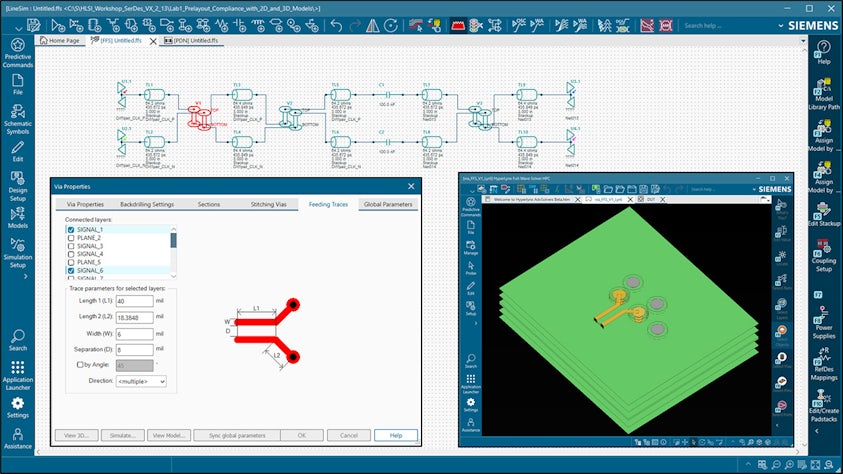3D electromagnetic simulation is a critical technology by itself, but it's also part of a larger analytical process that determines whether a system has enough positive operating margin to function reliably. Analyzing an individual structure allows it to be understood and optimized for electrical behaviors like insertion loss and crosstalk, but it's the behavior of the overall system that ultimately matters, not its individual elements.
HyperLynx Advanced Solvers are tightly integrated with HyperLynx Signal Integrity and HyperLynx Power Integrity flows to provide accurate, automated interconnect modeling as part of a system-level analysis workflow. This allows DDR interface, high-speed serial channel and AC power integrity analyses to be performed with the highest levels of modeling accuracy. PCB models are extracted and solved automatically as part of these system-level workflows.
With HyperLynx, the analysis flows have already been established, proven and documented - providing a ready to use flow right "out of the box”, or a baseline to build from when creating your own customized flows. HyperLynx Advanced Solvers can post-process data and output simulation results in a wide variety of different output formats to meet your particular needs.






